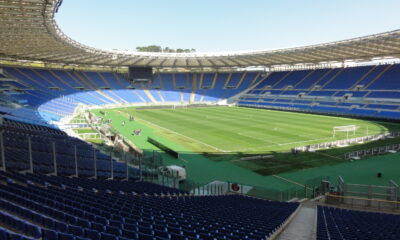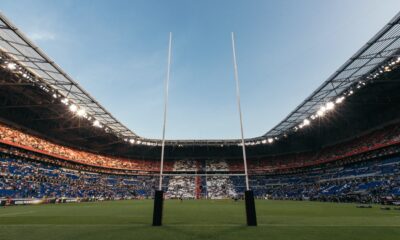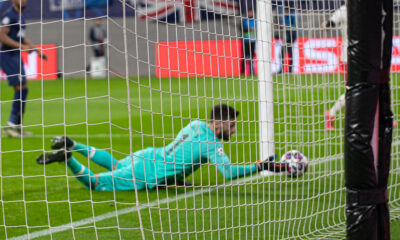Football
Mobs, Violence, Discrimination: The Italian Ultra Problem
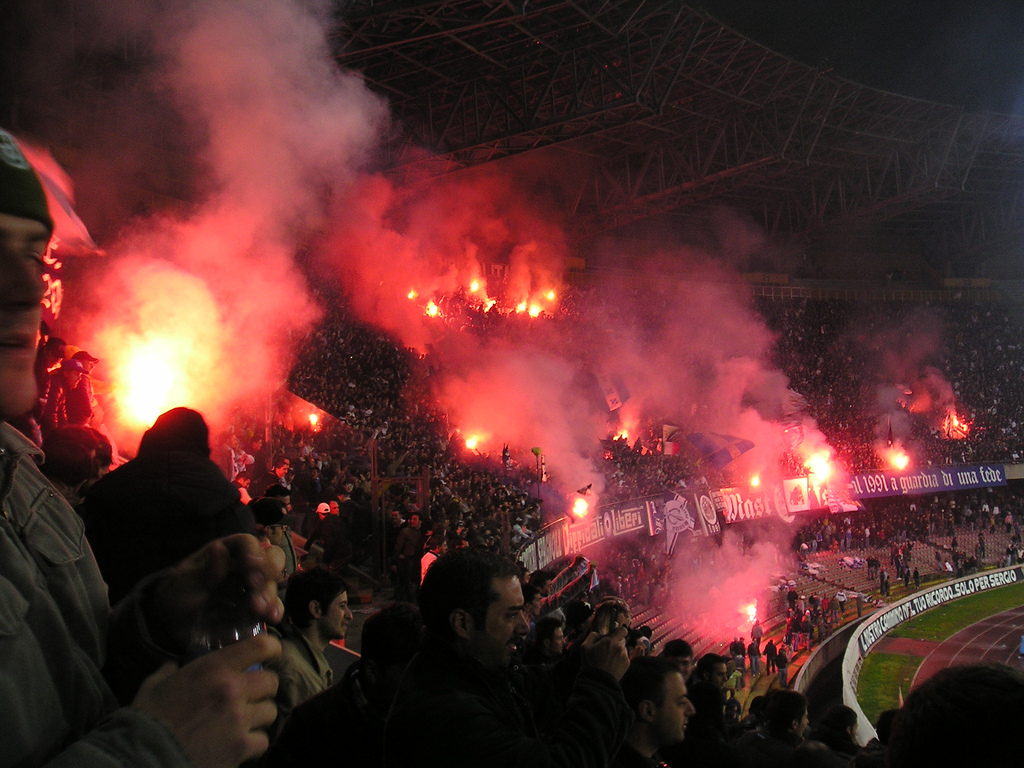
The shocking world of Italian ultras revealed

Italy is a beautiful country, well-known for its cuisine and architecture. The nation also possesses a rich footballing history, boasting four World Cups, to accompany its incredible culture. Unfortunately, there is an ugly side to Italian football. A side dominated by violence, racism and crime. This, is the Italian ultra problem.
Violence travels to Merseyside
In April 2018, AS Roma’s impressive Champions League run momentarily captured the hearts of the footballing world. A sensational 3-0 victory against Barcelona at the Stadio Olimpico had secured them a semi-final clash with English giants Liverpool. However, at Anfield, a problem that has plagued Italian football for decades would yet again rear its ugly head.
Prior to the match, fan violence left Liverpool fan Sean Cox fighting for his life. Masked members of Roma’s infamous ‘Fedayn’ ultras physically assaulted the supporter in an unprovoked attack.
The incident made global headlines and once more overshadowed Italy’s quality on the pitch with a heinous act off it. Roma’s President, Jim Pallotta, called for nationwide reforms across Italian football. He demanded that authorities ‘wake up’ and finally deal with one of the country’s biggest sporting problems, football hooliganism.
Contrary to this, the loyalty and passion of fans in Italy has not always been synonymous with negativity. Certain groups of culturally and socially alike individuals have attended games together in the top flight since 1929.
The birth of the Ultras
It wasn’t until the mid-1970s that Italian fans became obsessed with the idea of campanilismo; a strong love to represent the area or territory in which you are from, that the real problems began to emerge.
Paramilitary-like groups with underlying ideological motives formed up and down the country. They used slogans and emblems from the Second World War to represent themselves and their area. This was essentially the origin of the Italian ultra problem.
By the 1980s, nearly every ultra group had links to the far right and had elected a leader, or ‘capo’, they admired. The ‘capo’ would be responsible for dictating their actions and the songs they sang. Fans had lost interest in the football, and began to characterise local politics, violence and organised crime. This dangerous culture has continued into today’s game too.
It is estimated that there are now over 400 groups of ultras across Italy’s four professional divisions. This number is more than ever before, and the number continues to grow.
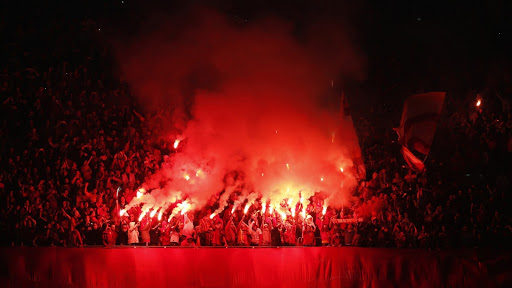
Football ultras have been heavily prominent in Italy’s terraces for nearly half a century. (Source: The Hard Tackle)
‘They have taken the Serie A hostage’
A major problem the ultra movement has caused Italian football, is the overbearing influence they have upon their clubs. Fabio Capello famously claimed in 2009 that ‘the fans are in complete control, they have taken the Serie A hostage’.
As ultras started to dominate the terraces in the mid-1990s, clubs began to allocate them tickets in return for better atmospheres and safer stadiums. Unsurprisingly however, by the year 2000, the number of stadium-related fan injuries had increased from 400 in 1995 to 1,200.
Many groups had taken complete control of the terraces. They received large cuts from official merchandise and sabotaged their team’s matches if they deemed the result to be unsatisfactory.
In 2012, Genoa’s 4-1 league defeat at home to Siena was halted for over 45 minutes when a large group of protesting fans shot fireworks at their own players as a result of their poor performances. Ultras have now monopolised their own clubs by threatening violence and racism to manipulate for financial and political gain.
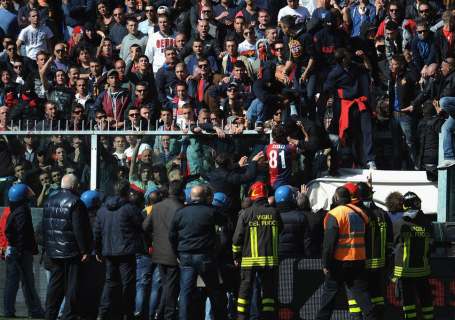
Genoa fans halt their own team’s match in 2012 with violent protests. (Source: The Independent)
Clubs complicit in underground operations
One of the most controversial instances of this is the recent Juventus ticketing scandal. In 2016, an investigation into the suicide of Raffaello Bucci; an authoritative member of Juventus’ infamous ‘Drughi’ ultras, unearthed a corrupt relationship between the club and its fans. The incident revealed just how sinister Italian football’s ultra problem had become.
After tapping into his mobile, undercover police concluded that, at the time of his death, Bucci had been working as an intermediary between the club, the Drughis, and the Calabrian mafia. Bucci was distributing funds generated from an illicit touting scheme. Juventus were supplying the group with discounted matchday tickets. The group were then re-selling the tickets at a higher price and the sales were generating revenue for the mafia.
The footballing world then discovered that the ultras had threatened Club President, Andrea Agnelli, for years. The ultras intimidated Agnelli with the disturbance of peace at home games through racial chanting if he failed to comply with their wishes. As a result, Agnelli was banned from football for 3 months in 2017, receiving a personal fine of 100,000 euros for his involvement in the scandal.
Last September, police arrested 12 Drughis for a host of mafia-related crimes in connection to the scheme, including money laundering, extreme violence and drug dealing.
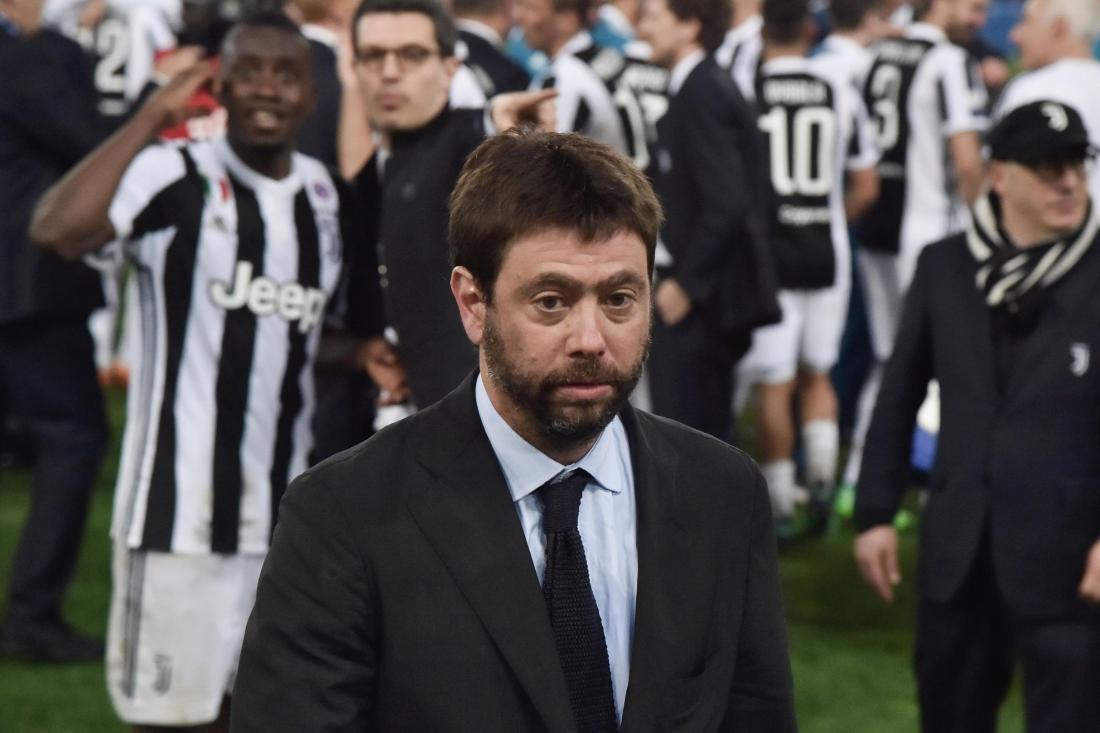
Juve chief Andrea Agnelli was heavily fined for his involvement in the scheme (Source: Bleacher Report)
The incident at Juventus was only the latest in a long line of escapades involving ultras exhibiting gang-like behaviour. Mafia infiltration has corrupted Italian football so much that malpractice and deviance have become a norm within the sport.
A study conducted by the Italian parliamentary anti-mafia commission in 2018 revealed that over 30% of all Italian football ultras either had ties to or were part of a mafia.
Disorder dominates match-days
These relationships have given birth to a thuggish inclination amongst hooligans that directly links violence with superiority. It is never uncommon for match-day brawls between rival fans to escalate into fatal pistol and knife wielding stand-offs.
In 2014, controversy marred Napoli’s Italian Cup Final clash with Fiorentina at the Stadio Olimpico. Hours before the match, notorious Roma ultra, Daniele De Santis opened fire on a group of Napoli fans, injuring and later killing 30-year-old Ciro Esposito.
CIRO VIVE!!!.
Curve A Napoli on the 6th anniversary of Ciro Esposito's murder.
25/06 pic.twitter.com/ESRQFcQ0mu— The Tifo Daily (@Ultramaniatics_) June 26, 2020
When news of the shooting broke, the Napoli ultras in the ground began to violently protest. Italian Prime Minister at the time, Matteo Renzi, helplessly watched on from the stands. The Mastiffs fought and threw flares at police to halt kick off.
Two years later, courts convicted De Santis of murder and imprisoned him for 26 years in one of the club’s darkest days.
Nazis in the terraces
Another issue that has arisen from Italy’s ultra-movement is the ever-increasing trend of neo-fascism within its football. Amongst the fierce rivalries, nearly all extreme ultra groups are bound by a collective political identity. An identity of racial hatred and proud nationalism.
As a result, decades of governmental and organisational efforts to control fan-related discrimination have always fallen short.
Fascism’s involvement in Italy’s fandom culture dates all the way back to the years leading up to World War Two. The country’s infamous ex-leader and close ally of Adolf Hitler, Benito Mussolini, began to use the sport as an integral propaganda tool for his government’s powerful agenda. This is where the Italian ultra problem has garnered an identity of its own.
Inspired by Italy’s 1934/38 World Cup winning teams under Mussolini’s regime, ultras have always bought into the fascist idea of working to achieve power.
Fast forward to the 21st century and this ideology is very much still alive today. Nazi symbols, swastikas, the Wehrmacht eagle and straight-arm salutes are still appearing in stadiums every single Sunday.
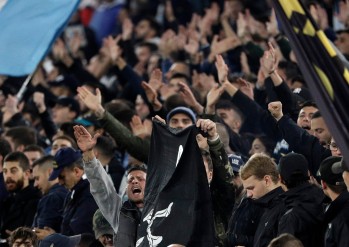
Members of Lazio’s Irridiucibilis make Hitler salutes at the club’s matches (Source: The Scottish Sun)
The Roman rivalry
An accurate representation of this in modern Italian football is the feud between the Roma ‘Fedayns’ and Lazio’s Irreducibilis. Fascist point scoring often fuels this rivalry, creating a never-ending cycle of hatred.
As described in Merlo’s work, the stupidity of football divides Roma and Lazio. Despite their divisions, however, their shared love for blind anti-Semitism unites them.
Last January, Roma fans attracted heavy criticism for gate-crashing Lazio’s 119th anniversary celebrations. Here, they displayed posters throughout the nation’s capital, negatively comparing the kit colours of Lazio and Napoli to those of the Israeli flag.
Local authorities recognised this xenophobic protest as a retaliation to one of modern football’s most controversial fan incidents.
During a home game against Cagliari in 2017, the Irriducibili found themselves in the curva sud of the Stadio Olimpico; the end of the shared stadium usually occupied by Roma.
The Lazio hooligans had been banned from their own area of the ground for persistent racist chanting the previous week. However, the club provided them with a ticketing loophole which allowed them entry into the ground.
The ultras then proceeded to deface Fedayn territory with numerous fascist stickers reading ‘the Roma fan is a Jew’. The stickers were accompanied with offensive images of famous holocaust victim, Anne Frank, wearing the colours of Roma.
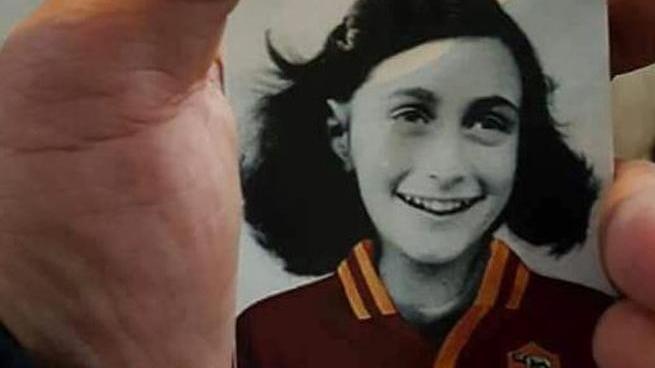
Lazio fans taunted fierce rivals Roma with this vile fascist sticker (Source: The Times)
13 Lazio fans received decade long stadium bans for inseminating racial hatred through the incident. The authorities also gave the club a 50,000 euro fine for enabling their behaviour.
That following week, excerpts from Frank’s diary were read before the start of every Serie A match. Groups of ultras in stadiums across Italy defiantly booed this act of respect. In the Allianz Stadium, Juventus fans turned their back to the pitch and sang the national anthem in protest.
These incidents only further highlight the sheer magnitude of the Italian ultra problem in terraces all over the country. The anti-semitism that is rife in these groups shows how the vast majority of them have fallen into the hands of neo-fascists.
Italian football’s racism problem: a failure from top to bottom
A key component of the ultra’s modern-day agenda has been a reoccurring theme of racial discrimination that widely abhors foreigners and people of colour.
The Cronache di ordinario razzismo (Chronicles of ordinary racism) reported that there were 58 cases of racial discrimination in Italian football between August 1st, 2019 and March 1st, 2020 alone.
Inter Milan’s Romelu Lukaku met opposition in the form of his own fans earlier this season, when they protected his abusers. The Belgian striker was subject to loud monkey chants as he scored the winning penalty in his side’s 2-1 victory against Cagliari.
Despite both clubs strongly condemning this behaviour, Inter’s hardcore Milano Nerazzuras issued an open letter to Lukaku, dismissing the racist connotations of the chants. The letter claimed that fans used them tactically to help their teams gain an advantage. They even claimed that racism was not a real problem in Italy.
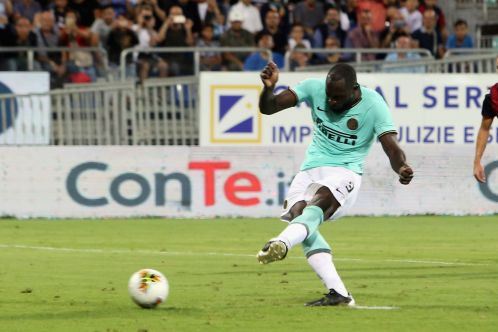
Lukaku was targeted with monkey chants after scoring Inter’s winning goal. (Source: Yahoo Sport)
The Italian Football Federation deemed the chants as not discriminatory, further raising tensions. and only fined Cagliari for the bottles that their fans threw onto the pitch. It was yet another depressingly familiar sight for the followers of Italian football.
Governing bodies fail to grasp problem
Although Italy’s hooligans are undoubtedly at fault for their behaviour, the ignorance and leniency of Serie A and the IFF is laughable. Their failure to deal with racial incidents has resulted in their inevitable failure of eradicating the abuse.
It was just last year that every top-flight Italian club wrote to the Serie A. The clubs asked them to work with the government to take the issue more seriously. Every time the league attempt to combat fan-related racism, however, the situation only seems to worsen.
In response to the letters and the racial abuse of Lukaku, Napoli’s Kalidou Koulibaly and Brescia’s Mario Balotelli in just three months of league football, the Serie A finally decided to launch a new official anti-racism campaign.
Their response was so bizarre and ill-informed that it shocked the whole of the footballing world. To combat the offensive chants in their stadiums, the league teamed up with Italian artist Simone Fugazzotto. Together, they created a series of monkey drawings with the tagline ‘We Are All Apes’.
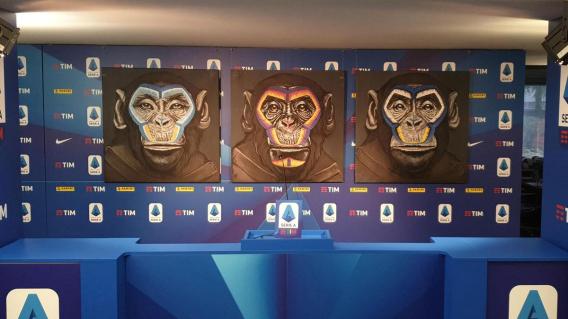
‘We Are All Apes’- The Serie A unveil their poorly judged anti-racism campaign in 2019. (Source: The National)
Despite the league defending the message behind the tone-deaf campaign, they received strong criticism from their clubs. AC Milan chief Ivan Gazidis angrily brandished the posters as ‘insensitive’ and ‘badly timed’.
In addition, a host of anti-discriminatory bodies launched scathing attacks on the league, including European footballing organisation ‘Fare’. A chief spokesperson for the body stated that the campaign was a ‘sick joke’ for a league who fail to deal with the dehumanisation of black players by its own fans on a weekly basis.
Moving forward
It is difficult to see Italian football ridding itself of its ultra problem, a problem that has plagued it for over 50 years. A combination of the ignorance and half-heartedness of the footballing authorities with the stubbornness and defiance of the hooliganistic fans has prevented any serious chance of reforming the issue.
With over 40,000 individuals identifying themselves as extreme ultras throughout Italy, the country is in serious need of a change. Italy’s institutes must work with fans to find a balance. The passion and loyalty should remain the same, but the criminality, extortion and discrimination should be eradicated.
Until governing bodies impose irreversible lifelong bans and stricter punishments, one of the country’s national treasures will forever succumb to a kingpin of hooligans and the dark underworld in which they surround themselves.
We hope you enjoyed the article ‘Mobs, Violence Discrimination: The Italian Ultra Problem’. What do you think Italian football can do to solve the problem? Let us know!
Read more on football here:
-
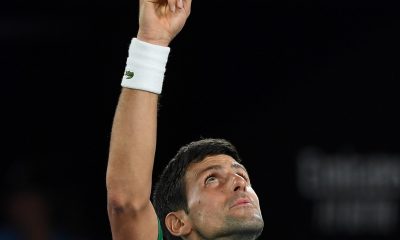
 News1 month ago
News1 month agoThe Best Male Tennis Players of All Time
-

 Uncategorised1 month ago
Uncategorised1 month agoWhat Dinosaur Has 500 Teeth?
-

 News1 month ago
News1 month agoThe Fastest Rugby Players Ever
-

 Football1 month ago
Football1 month ago10 of the most underrated footballers in the world right now
-
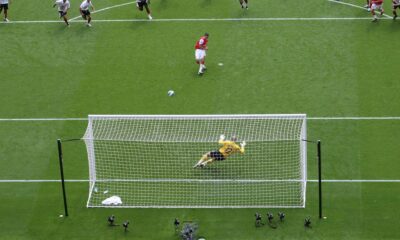
 Football1 month ago
Football1 month agoThe Best Penalty Takers of All Time
-
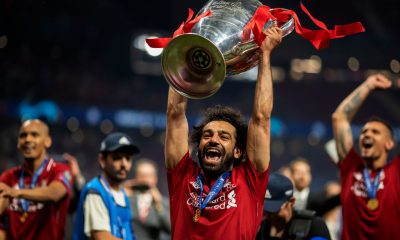
 Football1 month ago
Football1 month agoPlayers with the most goals in a Premier League season
-

 Football1 month ago
Football1 month agoWho is the Fastest Football Player in the World?
-
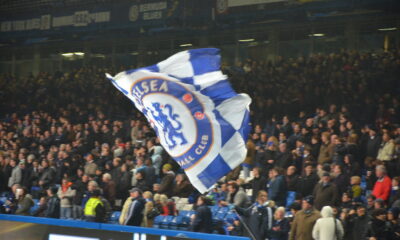
 Football1 month ago
Football1 month agoChelsea’s Possible Lineup For Next Season




